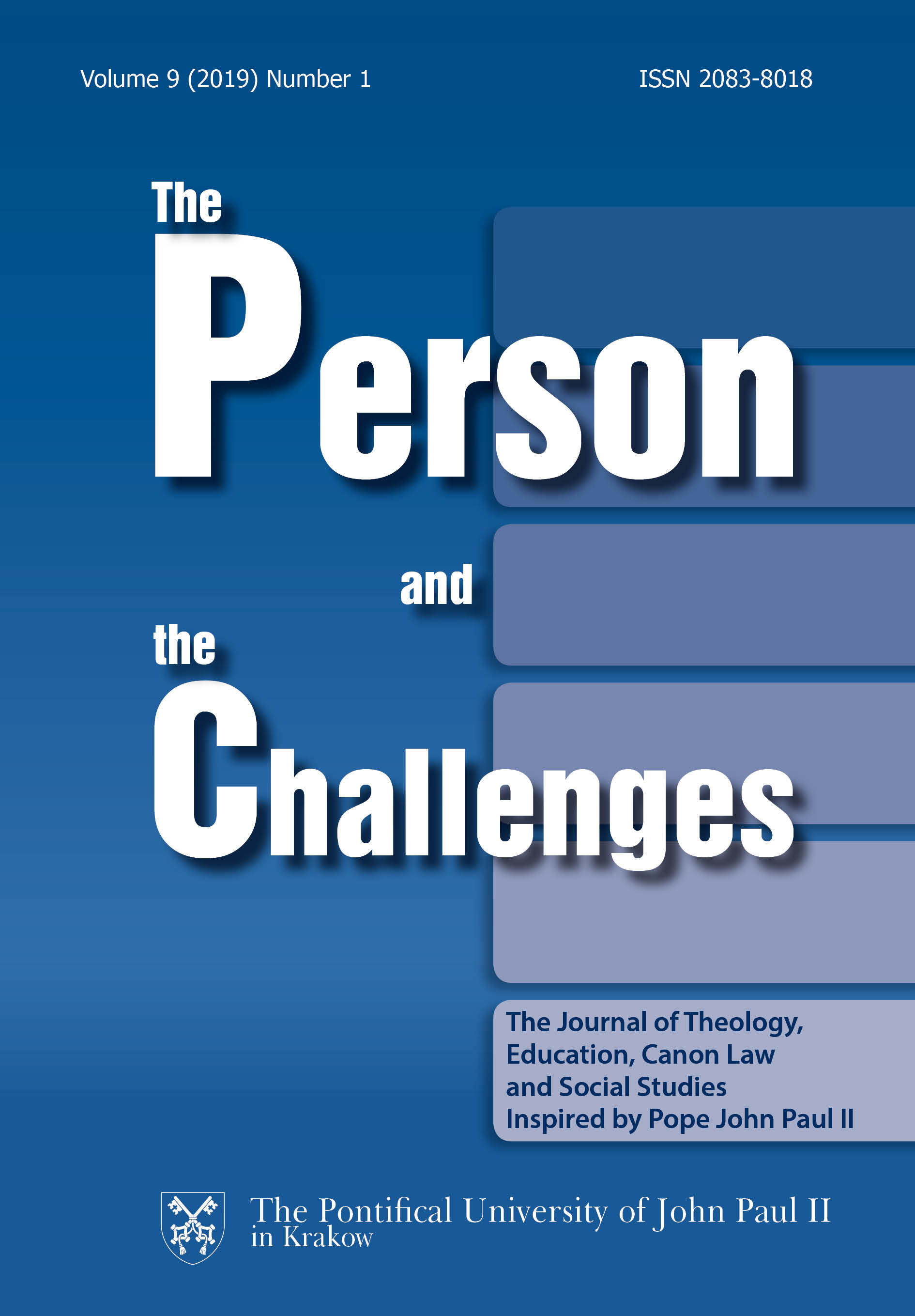John Paul II’s Theology of the Suffering Body
DOI:
https://doi.org/10.15633/pch.3363Słowa kluczowe:
John Paul II, suffering, Theology of the Body, communion, compassion, contingency, experience, participation, redemption, transcendenceAbstrakt
This article evaluates the experience of suffering and its redemptive value in the light of St. John Paul II’s Theology of the Body. It begins by exploring how man was created in “the beginning,” before the experience of evil and sin. Man’s “original experiences” of solitude, unity and nakedness help man to understand himself as a being who is always in relation and is called to transcendence. These experiences continue to resonate within man, though sin can blind him from interpreting them correctly. Instead of man’s body opening him to relations and receiving the love of God and neighbor as a gift, he often experiences shame for his disordered desires, which enclose man within himself. While shame can be a negative experience, it is also a “boundary experience,” in that it points man to an original goodness that is now lacking due to the experience of evil. Suffering, likewise, can be a boundary experience that opens man, through his vulnerability, to recognizing his need for communion with God and neighbor. Christ, therefore, does not eliminate suffering but redeems it, transforming it into a revelation of God’s love. Suffering has become a path to conversion, to rebuilding goodness in man’s heart, and to liberation from evil. Redemption occurs when man freely opens himself to Christ’s love in the midst of suffering, making up for what is “lacking” in Christ’s suffering: our participation. Suffering isn’t a problem to be solved so much as a mystery to enter into. Through participation in Christ’s suffering, not only is man able to experience his own redemption, he can also offer his body with Christ for the redemption of the world.
Bibliografia
Catechism of the Catholic Church, 2nd ed., Vatican translation, Rome 1997: Libreria Editrice Vaticana.
Cessario R., The Godly Image: Christ and Salvation in Catholic Thought from Anselm to Aquinas, New York 2002: Fordham University Press.
Fitzmeyer J., The Letter to the Romans, New Jerome Biblical Commentary, Raymond Brown et. al. eds., Englewood Cliffs, NJ 1990: Prentice Hall.
Granados J., The Suffering Body, Hope, and the Disclosure of the Future, “Communio” 36 (Winter 2009).
Granados, J., Toward a Theology of the Suffering Body, “Communio” 33, no. 4, (Winter 2006).
Granados Garcia J., La carne si fa amore: Il corpo, cardine della storia della salvezza, Siena 2010: Cantagalli.
Hauerwas S., Truthfulness and Tragedy: Further Investigations into Christian Ethics, Notre Dame IN 1977: University of Notre Dame Press.
John Paul II, Jesus, Son and Savior: A Catechesis on the Creed, Boston 1996: Pauline Books and Media.
John Paul II, Man and Woman He Created Them: A Theology of the Body, Trans. M. Waldstein, Boston 2006: Pauline Books and Media.
John Paul II, Apostolic Letter Salvifici doloris: On the Christian Meaning of Human
Suffering, Vatican Translation. Boston: Pauline Books and Media, (1.03.1984), AAS 76 (1984), 201-50.
Kampowski S., Contingenza creaturale e gratitudine, Siena 2012: Cantagalli.
Levinas E., Totality and Infinity: An Essay on Exteriority, Norwell, MA 1991: Kluwer Academic Publishers.
Vatican Council II, Gaudium et spes, in Vatican Council II, Volume 1: The Conciliar and Postconciliar Documents, Ed. Austin Flannery, O.P., new rev. ed., Northport, New York 1992: Costello Publishing.
Wojtyła K., Love and Responsibility, San Francisco 1981: Ignatius Press.
Wojtyła K., Sign of Contradiction, New York 1979: The Seabury Press.
Pobrania
Opublikowane
Numer
Dział
Licencja
Prawa autorskie (c) 2019 Zachary Swantek

Utwór dostępny jest na licencji Creative Commons Uznanie autorstwa 4.0 Międzynarodowe.
Twórca oświadcza, że służą mu prawa autorskie do utworu i że nie są ograniczone w zakresie objętym niniejszym oświadczeniem oraz że utwór jest dziełem oryginalnym i nie narusza praw autorskich innych osób.
Twórca zezwala Uniwersytetowi Papieskiemu Jana Pawła II w Krakowie na nieodpłatne, niewyłączne i nieograniczone w czasie korzystanie z utworu, to jest:
- utrwalanie i zwielokrotnianie: wytwarzanie egzemplarzy utworu techniką drukarską, reprograficzną, zapisu magnetycznego oraz techniką cyfrową;
- obrotu oryginałem albo egzemplarzami, na których utwór utrwalono (wprowadzanie do obrotu, użyczenie lub najem oryginału albo egzemplarzy, publiczne wystawienie, wyświetlenie, a także publiczne udostępnianie utworu w taki sposób, aby każdy mógł mieć do niego dostęp w miejscu i w czasie przez siebie wybranym);
- włączenie utworu w skład utworu zbiorowego;
- udzielanie przez Uniwersytet Papieski Jana Pawła II w Krakowie sublicencji Creative Commons Uznanie autorstwa 4.0 Międzynarodowe (CC BY 4.0)
Uniwersytet Papieski Jana Pawła II w Krakowie udostępnia utwór na Platformie Czasopism należącej do uczelni, na licencji Creative Commons Uznanie autorstwa 4.0 Międzynarodowe (CC BY 4.0). Tym samym uprawnia wszystkich zainteresowanych do korzystania z utworu pod następującymi warunkami:
- zostanie podany autor i tytuł utworu,
- zostanie podane miejsce publikacji (tytuł czasopisma i adres internetowy do oryginalnie opublikowanego utworu).

